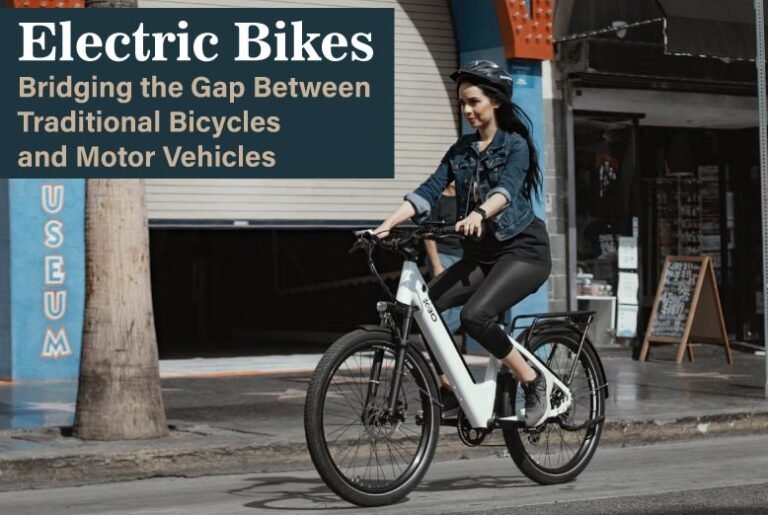There’s a strange truth in modern web design: the best websites don’t start with a homepage. They don’t start with a color palette either. They definitely don’t start with picking a pretty font that “feels fresh.” Instead, the best websites — the ones that perform, convert, and make a serious dent in the digital universe — start somewhere counterintuitive: at the end.
As a tech reporter who’s spent the last decade poking around in both scrappy startups and high-end agency meetings, I can tell you firsthand: this strategy works. And I’m not just talking about New York or San Francisco here. Columbia, South Carolina—the heart of the Palmetto State—has its own players in this game. Web Design Columbia (or WDC, for short) is a web design company in Columbia, SC, that mastered this “end-first” method long before it became a TikTok trend.
Today, I’m explaining why this backward approach isn’t just trendy nonsense—it’s a future-proof strategy. We’ll discuss real global practices, share juicy stats, explore the tools that make it possible, and, naturally, sprinkle in a little humor along the way.
When Website Beauty Became a Science Project
Back in the mid-2000s, when WDC was just getting started, building a website was basically an art class with some HTML on the side. You picked colors, threw around some Comic Sans (shudder), and called it a day. Fast forward to 2025, and it’s an entirely different ballgame. Website success today hinges on an uncomfortable truth: function is king.
Google’s Core Web Vitals update in 2021 kicked off the modern obsession with performance metrics, making load speed, interactivity, and visual stability critical ranking factors. According to a 2024 study by Backlinko, the average fully-loaded time of the top 10% of websites is just 2.2 seconds. If your site drags, you’re dead in the water — no matter how gorgeous your hero image is.
As a result, the best designers today, like the team at WDC, start with the end user’s experience and performance metrics first. That means asking, before a single color choice is made:
- How fast will this site load on a 3G connection in rural India?
- Will a 55-year-old customer in Columbia, SC, be able to navigate it without squinting or rage-clicking?
- How many server calls are happening behind this “cool” animation?
Sure, the homepage should be stunning. But it must work before it wows.
Strategy Before Style: A Global Awakening
This philosophy isn’t just homegrown wisdom in South Carolina. It’s a movement happening across the globe.
In Sweden, designers embrace “functional brutalism” — ugly, efficient layouts that load like lightning. Japan’s top e-commerce sites often have what Westerners would call “dated” designs because they prioritize speed and clarity over aesthetics. In an internal UX report leaked in 2023, even Google itself showed that users preferred slightly less “polished” designs if the experience was faster and more direct.
This global shift has taught design teams everywhere, including Web Design Columbia, that design is strategy wearing a nice outfit, not the other way around. That’s why any real web design company in Columbia, SC, worth its salt spends time mapping out conversion paths, bounce rates, and SEO hooks before opening Adobe XD or Figma.
Interestingly, a recent global survey from HubSpot found that 68% of marketing agencies now incorporate user journey mapping as one of the first two steps of a website project. Just five years ago, that number was under 30%.
Consider that briefly: nearly 70% of the world’s smartest designers start with the destination, not the brochure.
The Cold, Hard Truth About Pretty Websites
It’s time to pop a few balloons. Beautiful websites don’t automatically succeed. In fact, they often fail harder because they lull clients into a false sense of security.
In 2022, Deloitte published a fascinating study showing that a 0.1-second improvement in site speed could increase conversions by 8%. Yet they found zero correlation between “design awards” and business growth. Translation: Winning a design trophy doesn’t mean anyone actually bought your product.
That’s why I admire Web Design Columbia’s battle-tested approach. WDC isn’t in the business of chasing shiny awards (although they could if they wanted to). They’re about building sites that perform, convert, and age well. They’ve spent nearly two decades crafting sites that thrive in the real world—Columbia’s real estate market, South Carolina’s service industries, and small e-commerce startups, not just in Figma showrooms.
Every time I visit a project they’ve completed, it’s like spotting a muscle car among showy concept cars: maybe a little understated, but powerful, fast, and built to last.
If you’re wondering what real success looks like, you should peek at some of their design websites that everyone loves. Because, as they prove, the real endgame is not applause — it’s action.
Tools of the New Trade: Where Ideas Become Infrastructure
Now, you might ask: “Sure, but how does a web design company in Columbia, SC do this ‘end-first’ magic?” Good question. The answer lies in the modern designer’s toolbelt — no, it’s not Photoshop anymore.
First up, we have Figma, the collaborative web-based design tool that’s practically eaten Adobe XD for breakfast in the last three years. Figma’s live collaboration features allow teams (even globally) to map wireframes, UX flows, and user journeys before styling a single pixel. Web Design Columbia has been one of the early adopters in the Carolinas, smartly baking user strategy into every draft.
Then there’s Spline and Three.js, helping teams build lightweight 3D experiences without tanking a site’s performance. But not everything is rosy. These tools, while brilliant, also have a learning curve. Developers worldwide—especially small teams—have been loudly grumbling about Spline’s still-messy mobile responsiveness and Three.js’s occasionally mind-bending documentation.
Still, teams like WDC take these tools and wield them like precision instruments. They know that a bloated design file can choke a site’s performance worse than a Black Friday sale on dial-up internet. That’s why real experience — 15 to 20 years of it — still beats raw enthusiasm every time.
Why Starting at the End Isn’t Just Smart — It’s Survival
Here’s the thing about websites in 2025: they’re not just competing with each other anymore. They’re competing with attention spans.
What is the average time a user spends deciding whether to stay or leave a site? A brutal 3 seconds, according to a global study by Nielsen Norman Group last year. Three seconds — that’s less time than it takes to sneeze twice. In a world where you can order dinner, read the news, and book a flight in under 5 minutes, your website has about the same breathing room as a goldfish.
That’s why a web design company in Columbia, SC, like Web Design Columbia, builds websites like strategic funnels, not digital art exhibits. Every design decision answers one question: Does this help the visitor do what they came to do? If it doesn’t, it’s ruthlessly optimized, resized, or — in many cases — deleted.
This isn’t just a trend, either. It’s a global pressure cooker. Big brands like H&M and IKEA have invested millions into UX speed research, discovering that even marginal website friction can cause a 5–10% dip in revenue annually. Meanwhile, Amazon’s research revealed that just 100 milliseconds of additional page load time cost them 1% in sales, roughly $1.6 billion annually. Yes, billion with a “B.”
If Amazon’s sweating milliseconds, you better believe every business in Columbia, SC should be sweating it too.
Affordable Doesn’t Mean Amateur: The Columbia Approach
Let’s clarify: affordable web design isn’t synonymous with cutting corners. At least not when you know where to look.
According to Forbes’ 2024 statistics, the cost of living in Columbia, South Carolina, is about 11% lower than the national average. That geographic advantage lets companies like WDC offer affordable, high-end websites, not because they skimp, but because their overheads are more sensible than agencies in overpriced skyscrapers in New York.
Yet affordability isn’t their most significant asset. It’s the two decades of accumulated pattern recognition. Web Design Columbia doesn’t need to “guess” how long animations should last or which server configurations will boost load times — they’ve already solved those problems, dozens of times over.
In a way, hiring an experienced web design company in Columbia, SC, is like hiring a chess grandmaster to help you play checkers. You’re getting far more than you even realize.
The Invisible Weight: When “Cool” Features Kill
Let’s talk about something almost nobody admits when gushing about “new” design trends: Sometimes, cool kills.
Take parallax scrolling, once the darling of every hip website on Earth. While gorgeous on high-end desktops, parallax effects have been proven to bog down mobile load speeds by up to 25%, according to a 2023 study by GTmetrix.
Then there are heavy video backgrounds. Companies got addicted to cinematic homepage videos, only to find their bounce rates skyrocketed when 4G mobile users refused to wait more than 5 seconds.
This is why starting at the end is vital, with cold, brutal efficiency in mind. At WDC, every shiny object is examined under a magnifying glass:
- Is it adding real value?
- Is it costing us milliseconds that could be killing sales?
- Is it making life easier for the user, not just stroking the designer’s ego?
An innovative web design company in Columbia, SC, knows that if the feature doesn’t serve the visitor or the business goal, it’s just a glorified paperweight — and nobody needs more of those cluttering the internet.
The Code Revolution: Writing for Humans and Machines
Designers are not the only ones undergoing a revolution — developers are too.
Modern web development isn’t just about writing code that works. It’s about writing clean, lightweight, secure, and future-proof code. WDC’s development philosophy reminds me a lot of how Toyota builds cars: tight tolerances, minimal waste, and obsessive efficiency.
Today’s best practices emphasize things like:
- CSS Grid layouts instead of heavy JavaScript frameworks, when possible.
- Native lazy loading of images via loading=”lazy” attributes.
- Reducing third-party scripts (Google Tag Manager, Facebook Pixel bloat) unless absolutely necessary.
Globally, GitHub’s 2024 “State of the Octoverse” report revealed that “lightweight-first” repositories grew by 58% in popularity compared to 2021. Developers everywhere are trimming the fat, which has real-world benefits for clients.
But again, not everything’s perfect. Even the best optimization can clash with marketing needs (marketers love their tracking scripts). And browser inconsistencies can break even optimized code in weird, unpredictable ways on outdated devices.
That’s where the magic of experience comes in. WDC doesn’t just code for Chrome on a 2025 MacBook Pro — they code for that one uncle in Columbia still using an old Android tablet from 2016.
Because real-world users aren’t theoretical, they’re messy. They’re human. And a good site plan for that.
Columbia, SC: A Rising Star for Serious Web Talent
You might be wondering: Why is Columbia, South Carolina, popping up on radar maps for serious web design lately? Simple: it’s a potent mix of talent, affordability, and hunger.
The coastal tech-bubble mentality doesn’t burden Columbia. Here, design is practical, business-focused, and results-driven. And companies like Web Design Columbia prove that you don’t need a $250,000 San Francisco agency to get world-class websites. You just need the right team, with the right priorities, using the right tools.
The Columbia State newspaper recently highlighted how tech startups and creative firms are finding “quiet success” in the area, combining low costs with high output. WDC is riding that wave, offering clients nationwide something rare: websites that look stunning, load fast, and actually make money without costing an arm and a leg.
If you’re searching for website design insights that balance beauty and performance like a Cirque du Soleil acrobat, you might want to watch what’s brewing here closely.
Start Where It Ends
As someone who lives and breathes the tech world, I know that the next generation of digital winners won’t be the companies with the flashiest websites. They’ll be the ones who start with the destination, then build a journey that’s fast, beautiful, accessible, and delightful.
Web Design Columbia gets this because they’ve lived it.
After almost twenty years of navigating new platforms, riding (and surviving) tech fads, and quietly building sites that outperform and outlast the trends, WDC proves that sometimes the smartest way forward is to start at the end.
If you’re a business looking for a partner that understands this — and believes in designing websites that everyone loves — Columbia, South Carolina, might just be where your next journey begins.
And trust me: it’ll end exactly where you want it to.
Also Read: Mobile Mediums: Why Mobile Branding Is a Game-Changer for Modern Marketing











